赛题分值说明:
1. 线上初赛:题型仅为客观题,即Read and Know,Read and Reason,Read and Question三个模块,共40题,答题时间为110分钟,满分100分。第1-3题每题1分,第4-9题每题2分,第10题5分,第11-30题每题3分,第31-40题每题2分。
2. 复赛和决赛:题型包含客观题和主观题,即Read and Know,Read and Reason,Read and Question,Read and Create四个模块,共41题,答题时间为150分钟,满分100分。第1-3题每题1分,第4-9题每题2分,第10题5分,第11-30题每题1.5分,第31-40题每题2分,第41题30分。
Read and Know模块考查选手的阅读广度和基础阅读技能,Read and Reason模块考查选手对不同体裁和题材短篇文本的阅读能力以及阅读逻辑,Read and Question模块考查选手对跨语篇较长文本的综合信息处理和判断能力,Read and Create模块考查选手基于阅读理解的写作输出能力。 注:本样题仅供了解大赛题型,文末附有参考答案。
Part I Read and Know
In Part I, you will read short texts of various kinds. Read the instructions carefully and answer the questions. (Suggested completion time: 20 minutes)
Questions 1-3 (Suggested completion time: 3 minutes)
Directions: Read the following quotes. Match the quotes with the people. Please note there are two extra options you do not need.
Question 4 (Suggested completion time: 2 minutes)
Directions: Read the text and answer the question according to the text.
To ensure the high standards of facilities we need to build new wards, laboratories and consulting rooms. In short, we need your help now. Complete the coupon today and rest assured that your donation is going to the best possible cause.
4. Where is the piece of text taken from?
A. an advertisement
B. an instruction booklet
C. a story
D. a newspaper
Question 5 (Suggested completion time: 2 minutes)
Directions: Read the text and answer the question according to the text.
Few corners of the world remain untainted by intrepid tourists, and their impact is often devastating. Too frequently they trample heedlessly on fragile environments, displacing wildlife and local populations in their insatiable quest for unexplored locations.
5. What is the best title for this text?
A. The Future of Tourism
B. The Role of Tourism
C. The Price of Tourism
D. The Benefits of Tourism
Question 6 (Suggested completion time: 2 minutes)
Directions: Read the text and answer the question according to the text.
With E-book sales increasing by more than 300% for the second year, publishers delivering new revenue streams through E-book Apps, and academic publishers long having derived some 90% of their revenue online, it is a travesty to describe all this as the publishing world being "in denial" about digital.
6. What is the main idea of this text?
A. Publishers are making profits from E-book sales.
B. Not all publishers are threatened by digital storms.
C. E-books become a main source of revenue for publishers.
D. Traditional publishing industry is dying out.
Question 7 (Suggested completion time: 2 minutes)
Directions: Read the text and answer the question according to the text.
With our travel agency, the holiday you book is the holiday you get. If you arrive and find we've failed to live up to our promises, let us know what the problem is within one day of your arrival. We'll spend 24 hours doing everything possible to sort the problem out. In the unlikely event that we can't resolve your problem and make you happy within 24 hours, we'll fly you home and give your money back.
7. The text could best be described as__________.
A. a commitment
B. an appeal
C. a warning
D. a vow
Question 8 (Suggested completion time: 2 minutes)
Directions: Read the text and answer the question according to the text.
The new digital cameras are great fun and very easy to use. They let you review your pictures the moment you take them, so you can re-shoot right away if you're not satisfied. But remember, a digital camera is just a computer XXXX. It's not a replacement for your ordinary camera.
8. What is the meaning of the missing word XXXX in the text?
A. "something that is poor quality"
B. "an item that is not essential, something extra"
C. "something expensive but good value for money"
D. "a fashion which always remains popular"
Question 9 (Suggested completion time: 2 minutes)
Directions: Read the text and answer the question according to the text.
She had gone alone, but the children were to go to the station to meet her. And loving the station as they did, it was only natural that they should be there a good hour before there was any chance of Mother's train arriving, even if the train were punctual, which was most unlikely.
9. What can you say about their mother's train?
A. It would probably be early.
B. It would probably be on time.
C. It would probably be late.
D. It had been cancelled.
Question 10 (Suggested completion time: 5 minutes)
Directions: The bar chart shows the number and proportion of undernourished people in the developing regions, from 1990-1992 to 2014-2016. Answer the question according to the information in the chart.
Source: The Millennium Development Goals (MDG) Report 2015
10. Choose the INCORRECT description about the chart.
A. The latest estimates suggest that nearly one in nine individuals do not have enough to eat between 2014 and 2016.
B. Projections indicate that the 2015 MDG target is nearly reached, with 12.9 per cent of undernourished population.
C. The situation noticeably improved during the years 1995-1999, but went down in the first five years of the new millennium.
D. The proportion of undernourished people in the developing regions has fallen by almost half since 1990.
Part II Read and Reason
In Part II, you will read short texts on different subjects. Read the instructions carefully and answer the questions based on logical inference and reasoning. (Suggested completion time: 55 minutes)
Question 11 (Suggested completion time: 4 minutes)
Directions: Read the following definition of a logical fallacy. Answer the question according to the definition.
11. Which of the following provides a typical example of poisoning the well?
A. That's my stance on funding the education system, and anyone who disagrees with me hates children.
B. You are so weird. That means—we are pretty much sure—that your whole family is weird, too.
C. God exists because the Bible says so. The Bible is inspired. Therefore, we know that God exists.
D. I don't care what you say. We don't need any more bookshelves. As long as the carpet is clean, we are fine.
Question 12 (Suggested completion time: 4 minutes)
Directions: Look at the following picture and then answer the question.
12. Which of the following logical fallacies does the picture illustrate?
A. False Dilemma: an argument that presents a limited set of two possible categories and assumes that everything in the scope of the discussion must be an element of that set
B. Guilt by Association: a fallacy used to discredit an argument for proposing an idea that is shared by some socially demonized individual or group
C. No True Scotsman: an argument coming up after someone has made a general claim about a group of things and then been presented with evidence challenging that claim
D. Hasty Generalization: a fallacy committed when one forms a conclusion from a sample that is either too small or too special to be representative
Questions 13-14 Reasoning (Suggested completion time: 10 minutes)
13. Many people report that exposure to certain foods and drinks such as cheese, chocolate, and red wine, is associated with the onset of migraine headaches. Other people report that exposure to certain smells (especially strong perfumes) seems to trigger a migraine headache, and some note that exposure to bright and flickering lights can be followed by a migraine. It would seem that a person with a tendency to get migraines should try to find out which of these situations is associated with the onset of the headache and then avoid this stimulus.
All of the following, if true, would make the above recommendation impractical except:
A. The time delay between the trigger and the onset of the headache can make it exceptionally difficult to identify the trigger.
B. The presence of a known trigger doesn't always cause a migraine.
C. In a high proportion of cases the patients report multiple triggers for their headaches.
D. Most of the known triggers are common and almost unavoidable features of modern life.
14. Richard: The national budget should provide significant increases in all levels of education in the upcoming year.
Natalie: That's not fair. A reduction in defense spending in peacetime may bring us excessive risks. We can't afford it.
Which of the following is the best interpretation of Natalie's argument?
A. Funds saved from defense have been diverted to all levels of education.
B. Highlighting spending on education dangerously impacts on spending on the military.
C. The size of the military budget reflects a state's ability to fund educational activities.
D. Compared with military spending, investing in education will create a financial crisis.
Questions 15-17 (Suggested completion time: 6 minutes)
Directions: Read the text about a science discovery. Answer the questions according to the text.
Manipulating Memory
Memory is notoriously malleable. Our recollections fade and take on new meanings; sometimes we remember things that never even happened. But 15 .
Recently, however, scientists have started to grasp and tinker with memory's physical basis. Last year, in work evocative of films such as Eternal Sunshine of the Spotless Mind and Inception, researchers discovered ways to manipulate specific memories in mice using optogenetics, a powerful technique that can trigger nerve cells in animals' brains by zapping them with beams of laser light. In a series of experiments, they showed that they could delete existing memories and "incept" false ones.
This year, researchers went even further: switching the emotional content of a memory in mice from bad to good and vice versa. Under the laser, for example, male mice that had once associated a certain room with being shocked were tricked into acting as though they had once met friendly female mice there instead.
Whether the mice in these experiments actually experienced vivid false memories or just a fuzzy sense of pleasure or fear is unclear. Nor is it clear whether the findings apply to the tricks of memory so familiar to people. Long-sought therapeutic advances, such as treatments for post-traumatic stress disorder, could remain far off. One thing is certain, however: Once considered beyond scientific dissection, memory is finally starting to yield its secrets.
15. Which of the following best fits the numbered space in the text?
A. what is really happening in our brain as memories are remodeled remains mysterious
B. scientists are curious about why people are oblivious to what have happened to them
C. advanced technology has helped scientists discover the workings of our brain
D. some scientists argue that what we observe about human memory is not what it really is
16. The word "incept" is closest in meaning to ________.
A. operate
B. start
C. detect
D. occupy
17. Which of the following can be inferred from the text?
A. People's false memories result from the impact of different emotion provoked by later experience on the same spot.
B. The success in research indicates that it won't be long that a therapy is worked out for people disturbed by painful memory.
C. By zapping the brain cells of mice with light, researchers are able to create, erase, or alter their memories, good or bad.
D. Many fancy ideas in science fictions or movies that are based on them actually draw greatly upon scientific achievement.
Questions 18-19 (Suggested completion time: 4 minutes)
Directions: Read the text about cholera. Decide whether the statements are True or False according to the text.
A child receives the oral cholera vaccine Shanchol
Cholera is caused by a bacterial infection of the intestine. Approximately one in 20 people infected with cholera has a serious case, with symptoms including severe diarrhea, vomiting, and leg cramps. These symptoms quickly cause dehydration and shock, and can result in death within hours if the infected person doesn't receive treatment. Cholera is typically transmitted by contaminated food or water. In areas with poor treatment of sewage and drinking water, the feces of people with cholera can enter the water supply and spread quickly, resulting in an epidemic. The cholera bacterium may also live in the environment in some coastal waters, so shellfish eaten raw can be a source of cholera in affected areas.
18. Cholera is known to be a life-threatening disease which easily causes death of most of the patients.
True ( ) False ( )
19. Cholera typically occurs in areas near the sea or the river where contaminated food is a major source of the disease.
True ( ) False ( )
Questions 20-21 (Suggested completion time: 5 minutes)
Directions: Read the abstract of a research paper from the DeepMind website. Decide whether the statements are True or False according to the abstract.
Teaching Machines to Read and Comprehend
Authors: K. M. Hermann, T. Kočiský, E. Grefenstette, L. Espeholt, W. Kay, M. Suleyman, P. Blunsom
Published: NIPS 2015
Abstract: Teaching machines to read natural language documents remains an elusive challenge. Machine reading systems can be tested on their ability to answer questions posed on the contents of documents that they have seen, but until now large scale training and test datasets have been missing for this type of evaluation. In this work we define a new methodology that resolves this bottleneck and provides large scale supervised reading comprehension data. This allows us to develop a class of attention based deep neural networks that learn to read real documents and answer complex questions with minimal prior knowledge of language structure.
20. Previous studies didn't take constant effort to evaluate the reading ability of artificial intelligence machines, which was why the present research was conducted.
True ( ) False ( )
21. One implication of the research is that a methodology that helps gather and handle big data is indispensable to artificial intelligence related studies.
True ( ) False ( )
Questions 22-23 (Suggested completion time: 6 minutes)
Directions: Read the text about the "Think small" advertising campaign. Answer the questions according to the text.
Think Small
If you're interested in marketing and advertising, Volkswagen's "Think small" campaign for the Beetle when it was first introduced to North America in 1959 looms large as one of the greatest advertising campaigns of all time. It wasn't just a revolution in automotive advertising; it changed the entire industry.
Until the Beetle hit the market, automotive marketing copy was full of bluster, and the images were flights of fancy, emphasizing low, long lines and a fantasy lifestyle.
The clean, simple photography on a white background that emphasized the Beetle's compact, practical form may seem commonplace these days, but it was a revolution in a world where Americans grew up obsessed with muscle cars, horsepower, and tire smoke. Making the car small, when the convention was to make it fill the page, was also novel. The simplistic approach to design and layout was totally contrary to the advertising conventions of the time.
__ __22_____ The text was minimalist in both look and content, presenting the facts simply instead of trying to weave tall tales and fantasies; and instead of bluster, it ushered in an intelligent sense of humor that made readers feel like they were in on the joke. The message was one of smart anti-luxury, and took gentle aim at an industry obsessed with superficiality and styling, rather than the substance underneath the car bodies.
Not only does "Think small" continue to inspire Volkswagen advertising to this day, it ushered in a creative revolution in the advertising business and changed the world of marketing forever. "Think small" showed the power of humor and honesty, and its photographic and design principles brought about a major shift in the look and feel of marketing around the world.
22. Which of the sentences below best fits the numbered space in the text?
A. What defined the ad even more than its visual style was the tone of its copy.
B. This ad starts off doing the exact opposite of what you would expect in a car ad.
C. This was an exercise in minimalism and a very accurate reflection on the product itself.
D. The car wasn't depicted as an integral piece of the daily lives of a middle class family.
23. It can be inferred that the advertising conventions of the 1950s were reflected in the following except that ___________.
A. The ads in the 1950s typically showed proud owners and passengers evoking great joy about new shiny big acquisitions.
B. The marketing concept then focused on providing as much information as possible to the reader such as the way it's created.
C. The marketing schemes associated the advertised product with an idea or a way of living from average consumers' perspective.
D. The marketing practice may attach importance to a sense of humor brought by the use of exaggerated language.
Questions 24-25 (Suggested completion time: 4 minutes)
Directions: Read the following six remarks concerning the crowd. Four of them are taken from Gustave Le Bon's book, The Crowd: A Study of the Popular Mind. Choose the two remarks that may NOT be taken from the book.
24-25. _______
The Crowd
A. In crowds it is stupidity and not mother wit that is accumulated.
B. Crowds most envy the lonely man who walks confidently as if he is walking with the great crowds!
C. A crowd is not merely impulsive and mobile. Like a savage, it is not prepared to admit that anything can come between its desire and the realization of its desire.
D. I walked with them, as crowds have that effect on me, I want to do what they do, to journey towards some point of revelation, which of course never comes.
E. Crowds, being incapable both of reflection and of reasoning, are devoid of the notion of improbability; and it is to be noted that in a general way it is the most improbable things that are the most striking.
F. …the individual forming part of a crowd acquires, solely from numerical considerations, a sentiment of invincible power which allows him to yield to instincts which, had he been alone, he would perforce have kept under restraint.
Questions 26-28 (Suggested completion time: 5 minutes)
Directions: Read the text about a fly. Answer the questions according to the text.
The Fly
At that moment the boss noticed that a fly had fallen into his broad inkpot, and was trying feebly but desperately to clamber out again. "Help! Help!" said those struggling legs. But the sides of the inkpot were wet and slippery; it fell back again and began to swim. The boss took up a pen, picked the fly out of the ink, and shook it on to a piece of blotting-paper. For a fraction of a second it lay still on the dark patch that oozed round it. Then the front legs waved, took hold, and, pulling its small, sodden body up, it began the immense task of cleaning the ink from its wings. Over and under, over and under, went a leg along a wing, as the stone goes over and under the scythe. Then there was a pause, while the fly, seeming to stand on the tips of its toes, tried to expand first one wing and then the other. It succeeded at last, and, sitting down, it began, like a minute cat, to clean its face. Now one could imagine that the little front legs rubbed against each other lightly, joyfully. 27 .
26. Which of the following is NOT true according to the text?
A. The boss saved the fly out of his broad inkpot.
B. The fly was trapped by the thick ink on its wings.
C. The passage describes how a fly survived an accident.
D. The passage shows how a fly conquered a challenge.
27. Which of the following statement can best fit in the numbered space?
A. The horrible danger was over; it had escaped; it was ready for life again.
B. The boss was relieved now, reassured that the fly had been out of danger.
C. But the front legs waved, caught hold, and, more slowly this time, the task restarted.
D. But such a grinding feeling of wretchedness seized him that he felt positively frightened.
28. The tone of the text can be described as a complex mixture of anything but _______.
A. sympathetic
B. humorous
C. cheerful
D. depressing
Questions 29-30 (Suggested completion time: 7 minutes)
Directions: Read the text about Chaco Culture. Answer the questions according to the text.
The "Chaco Culture", as modern-day archaeologists call it, flourished between roughly the 9th and 13th centuries A.D. and was centered at Chaco Canyon in what is now New Mexico.
The people of the Chaco Culture built immense structures that at times encompassed more than 500 rooms. They also participated in long-distance trade that brought cacao, macaws (a type of parrot), turquoise and copper to Chaco Canyon.
29_______, researchers have to rely on the artifacts and structures they left behind, as well as oral accounts that have been passed on through generations, to reconstruct what their lives were like.
Archaeologists generally agree that Chaco Canyon was the center of Chaco Culture. Today the canyon is a national park and a UNESCO World Heritage Site. The National Park Service estimates that there are about 4,000 archaeological sites in the park, including more than a dozen immense structures that archaeologists sometimes call "Great Houses". Archaeological research has revealed many discoveries, including a system of roads that connected many Chaco Culture sites, and evidence of astronomical alignments that indicate that some Chaco Culture structures were oriented toward the solstice sun and lunar standstills.
“There has been more archaeological research conducted in Chaco and on the subject of Chaco than on any other prehistoric district in North America,” says a National Park Service statement posted on Chaco Culture National Historical Park's website.
"Today, twenty Puebloan groups in New Mexico, as well as the Hopi in Arizona, claim Chaco as their ancestral homeland and are tied to this place through oral traditions and clan lineages. A number of Navajo clans are also affiliated with Chacoan sites through their traditional stories," the National Park Service statement says.
Despite the fact that there has been an immense amount of archaeological research carried out at Chaco Canyon, and at other Chaco Culture sites in the American Southwest, modern-day archaeologists disagree over what the people of the Chaco Culture were like.
Some archaeologists think that the people of the Chaco Culture were not politically united, while some think they controlled an empire centered on Chaco Canyon. "What was Chaco? Opinions vary widely, perhaps wildly. Interpretations range from a valley of peaceful farming villages to the monumental capital of an empire," wrote Stephen Lekson, a professor at the University of Colorado Boulder, in an article published in the book The Architecture of Chaco Canyon, New Mexico (University of Utah Press, 2007).
Lekson noted that there are different interpretations among archaeologists as to what the Great Houses were. Some archaeologists believe that they were villages inhabited by thousands of people, while others think that they were elite residences that housed a small number of residents.
29. Which of the following best fits in the numbered space in the text?
A. The people of the Chaco Culture did not use a writing system and as such
B. While archaeologists are not certain what caused this dramatic population bump
C. When thinking about archaeological sites, we tend to think of them as dead silent
D. Since Chaco's national monument status may not protect it from development pressures
30. Which of the following statements can we know from the text?
A. The people of the Chaco culture were good at foreign trade.
B. "Great Houses" were built from approximately the 9th to 13thcentury A.D.
C. Most descendants of ancient Chaco people live in New Mexico now.
D. Archaeologists hold different ideas about how the people of the Chaco Culture lived.
Part III Read and Question
In Part III, you will read passages on the same subject. You will be required to identify the writer's position and evaluate the effectiveness of the writer's arguments. (Suggested completion time: 35 minutes)
Questions 31-40 (Suggested completion time: 35 minutes)
Directions: Read three passages about fashion. Answer the questions according to the passages.
Passage A
It's not that easy to answer the question, "what is fashion?" because it means different things to different people. Fashion is an art. It's a religion. It's a job. It's a peek into a personality. It's playfulness. It's an escape or a disguise. It is a feast for the eyes. But ultimately, 32 . French fashion designer Coco Chanel once said, "Fashion is not something that exists in dresses only. Fashion is in the sky, in the street, fashion has to do with ideas, the way we live, what is happening."
It's true. Fashion isn't defined solely by our clothing choices, but is also conveyed through the way we carry ourselves, our personalities and our views of the world. At its most fundamental, fashion is simply the prevailing style or custom, as in dress or behavior.
So, who exactly answers the question "what is fashion"? Who decides what's fashionable and what isn't? What's in or what's out?
Fashion Designers. The iconic fashion houses—Prada, Gucci, Chanel—are referred to as haute couture, French for "high sewing". These designers lead the way in creating trend-setting fashion. While some of their designs are outrageous and completely unrealistic when it comes to everyday wear, generally the theme is adapted into versions suitable for wearing.
Media. Fashion trends are often sparked by characters on popular television shows and movies as well as adopted from magazine pages. "Sex and the City", "The Devil Wears Prada", these shows introduced us to new, cutting-edge designs. While you might not be caught dead wearing a Carrie Bradshaw original, you might take ideas inspired from her look and piece together your own creation.
Celebrities. A prime example of a celebrity-driven fashion trend? UGGs. Until Kate Hudson and Jessica Simpson were spotted wearing them around L.A. several years ago, no one had given any thought to UGG boots. Now they are everywhere.
Musicians. Musicians have always been very influential when it comes to dictating fashion. Rock 'n' roll is fashion. Elvis is an iconic example. In the 1950s, everyone wanted to dress like Elvis. What about the heavy metal hair bands so popular in the 1980s? Axl Rose reinvented the head bandana while Poison, Motley Crue and Bon Jovi set the pace for big, rocker hair.
Just because you don't know if a Prada bag is fall 2007 or spring 2008 doesn't matter. All that matters is that you like it and it's an expression of you. That is fashion.
Passage B
[A]Fashion is more prevalent in modern society than in primitive tribes or peasant communities. The modern society is an open society where class distinctions are not so rigid as in primitive society. Its urban and mobile class structure enables people to cultivate individual taste and adopt new course. [B]Our standards of judgment have also changed. Today the individual is rated more by observable externalities than by his ancestry, his character or his genuine accomplishments. The clothes a man wears, the language he speaks, the manners he shows have more weight in ascribing a status than his simplicity, patriotism and integrity.
If he can keep himself up to date in the matters of his dress, speech and manners, he will assure himself a high social esteem. [C]Not only the mobile and urban character of modern society but its affluence also speaks for greater prevalence of fashion in it. Men today are richer than their ancestors and have more leisure. They have the necessary means and time to play with luxuries and to think of fashion. Maclver writes: We do not think of fashion in overalls; there is more of fashion in the body of an automobile than in its chassis. There is no fashion in steam shovels. [D]Consequently the higher the standard of living the more material there is for fashion to operate upon.
Passage C
As summer has officially faded into the colder weather of autumn, I assumed the days of Nike shorts, comically large T-shirts and polos would be only a memory of yesterday. This has not been the case.
Fashion, in and of itself, is already a type of conformism. In order to be considered fashion, a look, a garment or a stylistic choice must be deemed fashionable.
Who gets to decide this—what is fashionable? While certain fashion heavyweights play a role in this decision, the ultimate decision is left to the public.
As I was surfing the Web recently for inspiration for this column, I came across the Prada website. What I discovered literally caused me to gasp. Of course, everyone knows Prada is an expensive brand—a luxury—but what I discovered shocked me: a keychain priced at $180. No, this keychain was not solid gold or encased in diamonds. It was simply a keychain: a skull with the word "Prada" on a small charm.
How can a company charge $180 for a keychain? The answer: people are willing to pay for it. People know the brand and conform to the idea of owning a piece of such an Italian "luxury".
This is nonsensical. Why do we choose to wear miniscule shorts in frigid weather or spend nearly $200 on a charm? Such decisions are influenced by peers, the media and the personal resolution to not make rational, individualistic choices. We cling to the idea of acceptance.
In short, we often choose to abide by the pressures of social conventionality, and this leads us to make ridiculous selections—pairing Ugg boots with shorts or wearing neon with camouflage—which we would otherwise not make.
I am certainly shamefaced in my occasional conformity to these ludicrous fashion folkways. I am guilty of donning Crocs in public. Yikes!
Transient, often preposterous trends referred to as fads inspire some rather strange ideas. Who can recall the pet rocks of the '70s or Popples of the '80s? Such pop trends are not confined to behavior; they bleed into the fashion world, evidenced in overly distressed jeans, the most painful of neon shades, shoes that resemble Swiss cheese and a host of other fads I do not have the space to mention.
I refuse to give up hope for societal common sense.
One day we will comprehend that shorts are for the summer and ridiculously expensive keychains are for “never.” Do not allow others to dictate for you. Be bold. Be an individual. Do not buy the keychain.
31. The phrase "might not be caught dead" in Passage A most probably means ______.
A. would rather not die anyway
B. might not be caught red handed
C. would refuse completely to do something
D. might be uneasy though doing something
32. Which of the following best fits the numbered space in Passage A?
A. fashion is an individual statement of expression for each of us
B. fashion facilitates social change by providing a transitional stage
C. fashion is not an individual choice but a group choice
D. fashion determines our speech, opinion, dress, music, art, etc.
33. It can be inferred from Passage A that fashion designers, media, celebrities and musicians share the following views except ______.
A. that fashion is anything but separated from the daily life of ordinary people
B. that nothing completely absurd and unrealistic can finally become fashion
C. that fashion is what society accepts and has an element of social sanction behind it
D. that if a particular choice remains confined to an individual it can't be called fashion
34. The word "affluence" in Passage B is closest in meaning to ______.
A. versatility
B. wealthiness
C. peculiarity
D. charisma
35. According to Passage B, which of the following attributes may probably be more important than others for an individual to be favorably received now?
A. A wide range of erudition.
B. Loyalty to his or her friends.
C. A passion for popular novels.
D. Good virtues such as honesty.
36. Look at the four blanks with letters (A, B, C, and D) in Passage B and decide where the following sentence could be added.
The modern society is more tolerant of differences and therefore places few shackles on the cycle of fashion.
Where would the sentence best fit?
A. Option A
B. Option B
C. Option C
D. Option D
37. Which of the following is NOT true about the author's attitude towards fashion according to Passage C?
A. The author thinks it a waste of time mentioning a list of examples of irrational fads.
B. People are mad about fashion and therefore lose their own good judgment.
C. The author never allows himself to be carried away by the fashion trends.
D. Behind the behavior of keeping up with fashion is a need to stay in the crowd.
38. What does the author mean by "I refuse to give up hope for societal common sense" in Passage C?
A. To criticize the social obsession with appearance.
B. To provide an example of how ridiculous some fashion trends are.
C. To prove that the pursuit of fashion is beyond people's common sense.
D. To predict a possible impact of today's fashion on people's social behaviors.
39-40. Decide whether the statements are True or False according to the three passages.
39. All the three passages agree that fashion plays a role in the interplay of class relations that it satisfies the contrary desires for novelty and for conformity.
True ( ) False ( )
40. None of the three passages are denying conventional social values in people's judgment, for example, what's considered good about things or people.
True ( ) False ( )
Part IV Read and Create
In Part IV, you will read a passage and then write a short essay according to it. You should write with clarity and logic. (Time allowed: 40 minutes)
Question 41 (Suggested completion time: 40 minutes)
Directions: Read an excerpt from Discourse on the Method of Rightly Conducting the Reason and Seeking the Truth in the Sciences. Write a short essay according to the excerpt.
… And as a multitude of laws often only hampers justice, so that a state is best governed when, with few laws, these are rigidly administered; in like manner, instead of the great number of precepts of which logic is composed, I believed that the four following would prove perfectly sufficient for me, provided I took the firm and unwavering resolution never in a single instance to fail in observing them.
The first was never to accept anything for true which I did not clearly know to be such; that is to say, carefully to avoid precipitancy and prejudice, and to comprise nothing more in my judgment than what was presented to my mind so clearly and distinctly as to exclude all ground of doubt.
The second, to divide each of the difficulties under examination into as many parts as possible, and as might be necessary for its adequate solution.
The third, to conduct my thoughts in such order that, by commencing with objects the simplest and easiest to know, I might ascend by little and little, and, as it were, step by step, to the knowledge of the more complex; assigning in thought a certain order even to those objects which in their own nature do not stand in a relation of antecedence and sequence.
And the last, in every case to make enumerations so complete, and reviews so general, that I might be assured that nothing was omitted.
The long chains of simple and easy reasonings by means of which geometers are accustomed to reach the conclusions of their most difficult demonstrations, had led me to imagine that all things, to the knowledge of which man is competent, are mutually connected in the same way, and that there is nothing so far removed from us as to be beyond our reach, or so hidden that we cannot discover it, provided only we abstain from accepting the false for the true, and always preserve in our thoughts the order necessary for the deduction of one truth from another. And I had little difficulty in determining the objects with which it was necessary to commence, for I was already persuaded that it must be with the simplest and easiest to know, and, considering that of all those who have hitherto sought truth in the sciences, the mathematicians alone have been able to find any demonstrations, that is, any certain and evident reasons, I did not doubt but that such must have been the rule of their investigations.
41. Write a short essay of about 300 words based on your understanding of the excerpt. Remember to write in your OWN words. Your essay should respond to the following questions:
1) What is the main issue that Descartes explores in this excerpt, and what is his method?
2) What is your OWN understanding of the methods proposed by Descartes?
参考答案:
Part I Read and Know
1-5 B D E A C
6-10 B A B C A
Part II Read and Reason
11-15 A D B B A
16-20 B C False False False
21-23 True A C
24-25 BD/DB
26-30 D A B A D
Part III Read and Question
31-35 C A B B C
36-40 B C A False True
还想了解更多最新赛场真题,以练促能、高效提升?《阅读大赛真题—2020》实现你的愿望!
(点击图片,查看真题课程详情)
课程包含2020“外研社·国才杯”全国英语阅读大赛各赛段真题,附加赠送2019年真题。课程依托官方赛事系统 “iTEST智能测评云平台”,全真环境反复练习,提供即时反馈;精选典型题目深度剖析,梳理答题思路,传授备赛技巧。








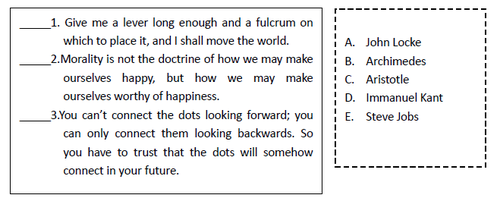

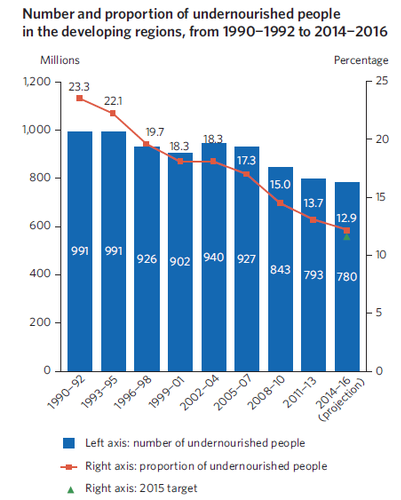

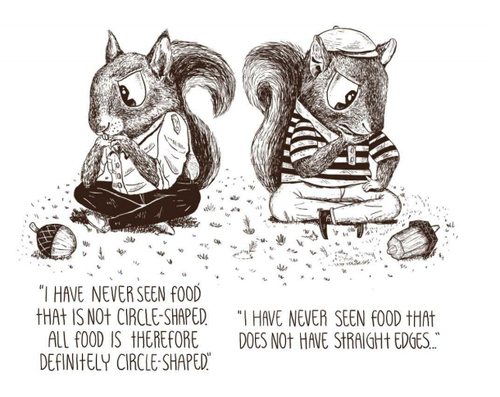



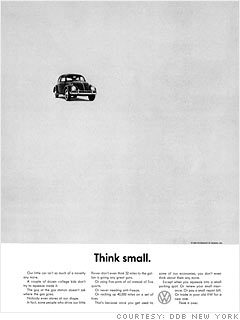
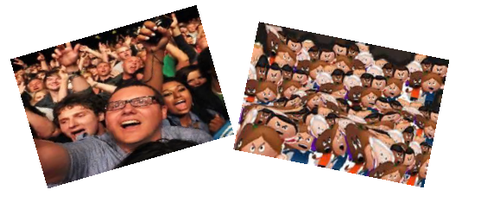
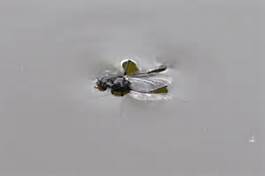

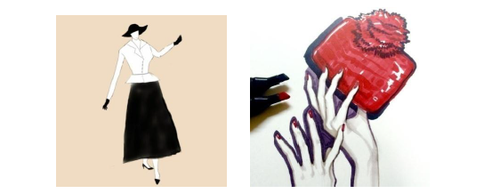

 北京市西三环北路19号外研社大厦3101室
北京市西三环北路19号外研社大厦3101室


